calms itching in sensitive skin
Helps reduce neuronal stimulation of itching and interrupt the itch-scratch cycle
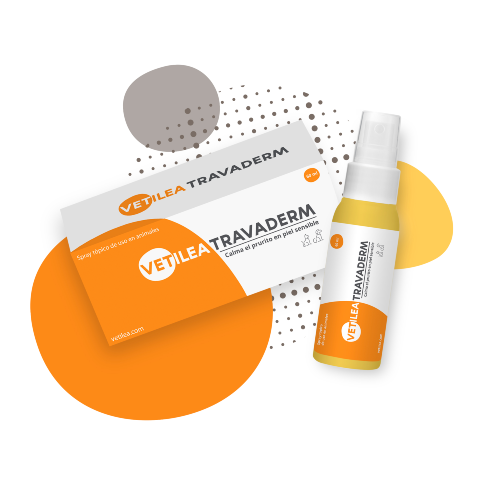

CALMS ITCHING IN SENSITIVE SKIN
Helps reduce neuronal stimulation of itching and interrupt the itch-scratch cycle
It works through a novel mechanism
The TRPV1 antagonist
Vetilea Travaderm is a spray for topical use to soothe itching in sensitive and allergic skin in localized areas. It can be used in young animals, immunosuppressed animals, in chronic patients and as a complement to pharmacological antipruritic treatments.
Vetilea Travaderm contains Hydroxymethoxyiodobenzyl Glycoamide Pelargonate (HMBG) in a solution of emollient oils that help break the itch-scratch cycle.
The main component of Vetilea Travaderm works through a novel mechanism. It is a TRPV1 receptor antagonist (Transient Receptor Potential Vainilloid 1) that helps reduce neuronal stimulation of itching and interrupt the itch-scratch cycle.
In addition, it helps maintain the skin’s barrier function and reduce oxidative stress.
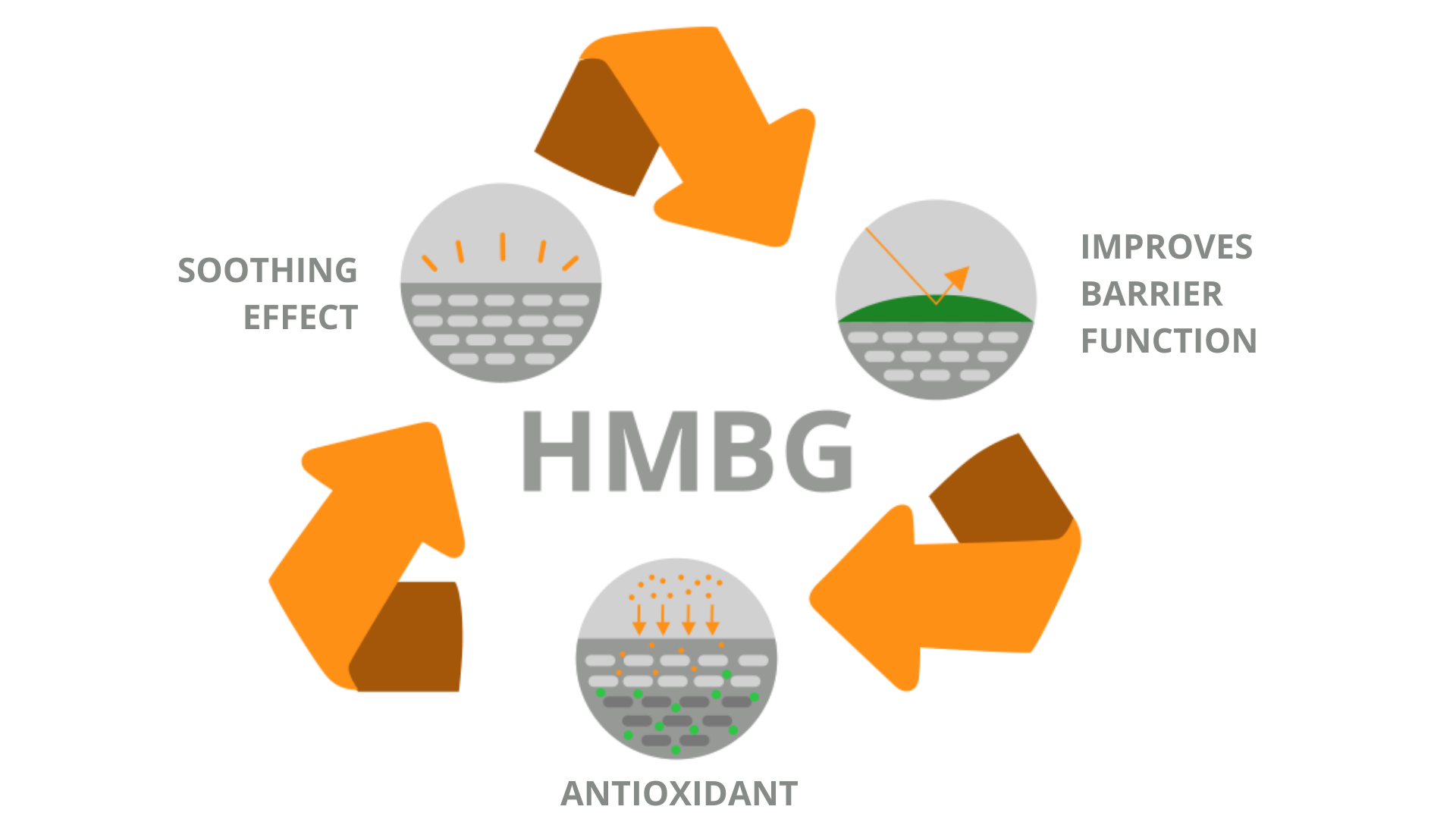
It is the first product that acts at the neuronal level to stop itching
60 ml bottle, topical spray for easy application on sensitive animal skins
It is the first product that acts at the neuronal level to stop itching
60 ml bottle, topical spray for easy application on sensitive animal skins
Discover how it works and what makes it so unique:
COMPOSITION
Vetilea Travaderm comes as an easy-to-apply topical spray.
Components:
- Isopropyl myristate
- Isohexadecane
- Sweet almond oil
- Ethoxydiglycol
- Tocopheryl acetate
- Hydroxymethoxyiodobenzyl glycoamide pelargonate
- Without parabens
INSTRUCTIONS FOR USE
Apply about 10 cm from the skin twice a day on the affected surface.
In the case of bathing, apply immediately after bathing and leave a minimum of 48 hours until the next bath.
As maintenance, apply twice a week on the normally affected surface

CLINICAL STUDY IN PODODERMATITIS
Study published in Veterinary Dermatology, demonstrates the effectiveness of Travaderm in pododermatitis
Preclinical Data
Several preclinical studies have been carried out to determine the mechanism of action of Hydroxymethoxyiodobenzyl glycoamide pelargonate.
TRPV1 antagonism
The modulatory activity of the TRPV1 channel was evaluated in neuroblastoma cells expressing this receptor. Capsaicin (10 µM) was used as the channel activator compound. The antagonist activity of the compound was demonstrated, with an IC50 of 19.90 µM.

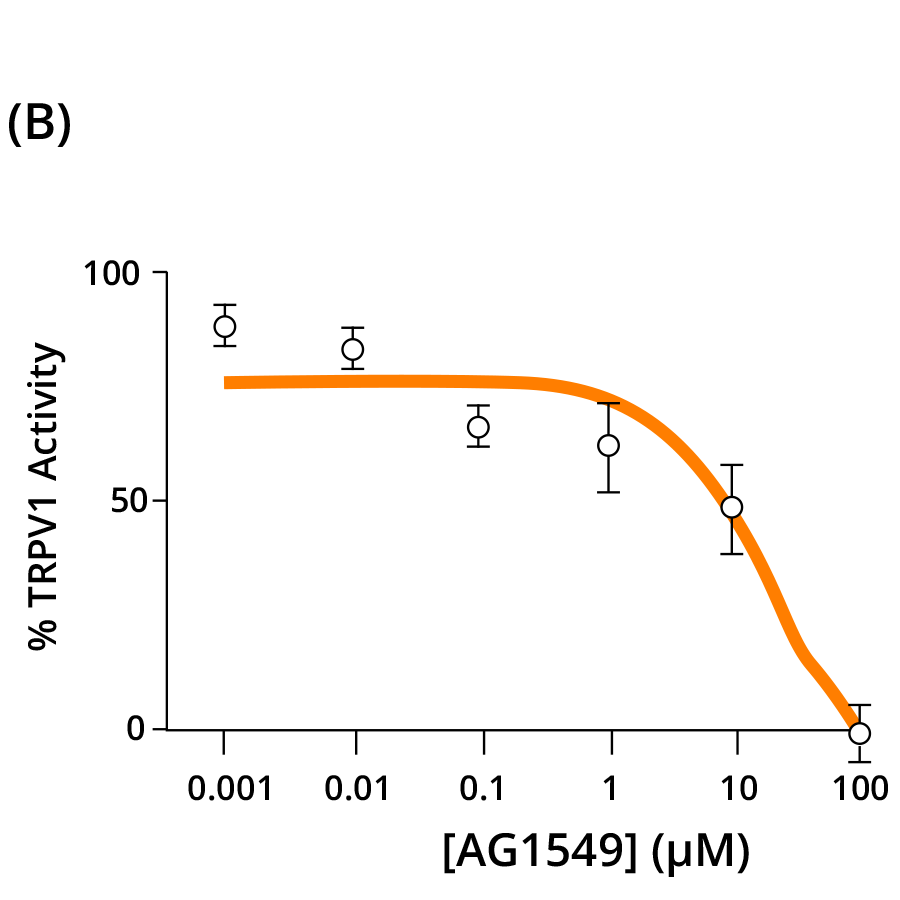
Figure 1.
Dose-dependent antagonist activity of HMBG (in publication AG1549), adapted from López-González et al .
Electrophysiological functional study of TRPV1
The transmission of current through the TRPV1 channel was studied in cells transfected with this channel.
HMBG was found to block capsaicin-initiated activity by applying the patch clamp technique in cells expressing the TRPV1 channel.
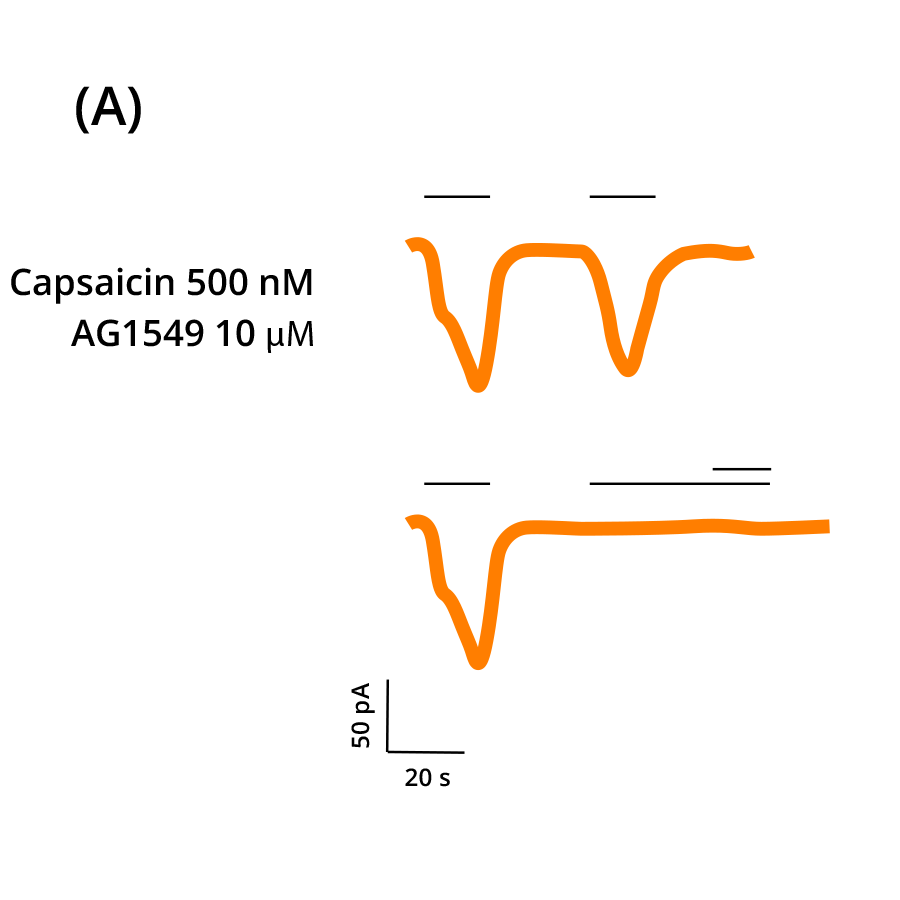

Figure 2.
A) Representative currents in capsaicin control and HMBG treatment (AG1549 in publication)
B)% of current evoked with capsaicin in control group and with HMBG. Graph adapted from López-González et al .
In vitro toxicology
Irritation, cytotoxicity and skin sensitization, phototoxicity and mutagenesis studies have been carried out with satisfactory results.
The product should not be applied on open wounds, eyes or mucous membranes.
Diversity of applications
+25 clinical cases of localized pruritus of different etiology
Clinical cases
Below are the data of 4 clinical cases performed by Xavi Serra, veterinary dermatologist (Més Que Gossos):
CASE 1
Patient: Milo, mongrel male hound, 8 months.
Vaccination and deworming: Correctly vaccinated and dewormed.
Background: High itching of 1 month of evolution in the forelimbs. No apparent lesions and no appreciable infection on cytology.
Treatment: Travaderm every 12 hours, for 1 week.
Results: At 5 days the itching ceases completely, after a week there are still no lesions and the itching is null.
The treatment is maintained 1 time a day at night for another week. One month later the patient is still without itching.
CASE 2
Patient: Nala, mixed-race female, 6 months.
Vaccination and deworming: Correctly vaccinated and dewormed.
Background: No remarkable background. He presents itching in bilateral forearms and in the vulvar area, where he presents mild intertrigo.
Treatment: Travaderm every 12 hours, for 1 week
Results: The pruritus ceases the first day after the administration of the product. After the week of treatment, the treatment is maintained 1 time a day at night for a further week. Nala has not returned to itchiness in the affected areas.
Before
Nala perivulvar area. Erythema is observed.
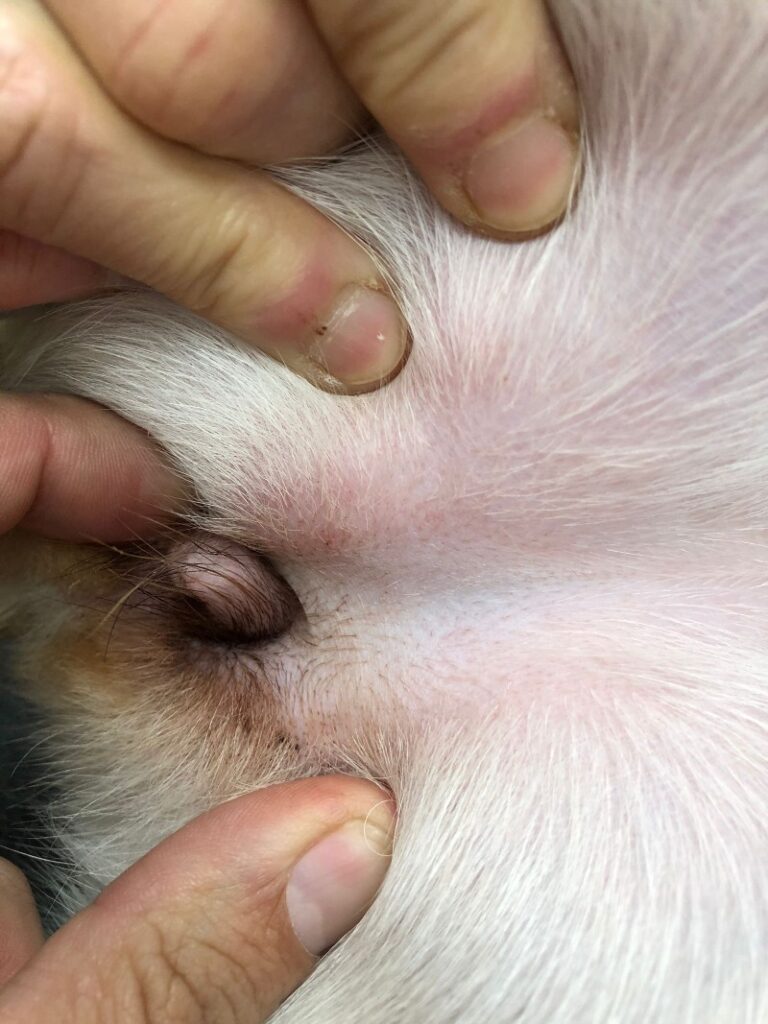
Later
Perivulvar area after treatment.
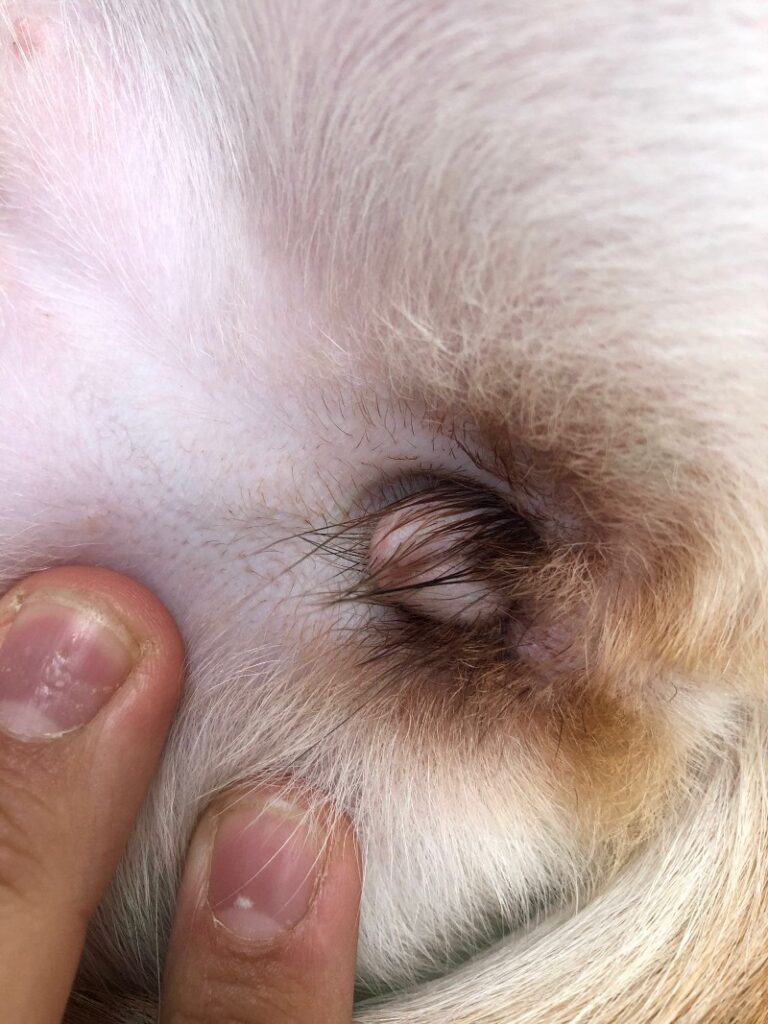
CASE 3
Patient: Ares, male boxer, 10 months
Vaccination and deworming: Correctly vaccinated and dewormed.
Background: With symptoms of atopic dermatitis since a puppy (facial pruritus, bilateral otitis, pododermatitis and inguinal erythematous dermatitis). Treated with weekly shampoo and omega3 / omega6 fatty acids. He is seen with moderate pruritus in the forelimbs without infectious agents on cytology.
Treatment: Travaderm every 12 hours, for 1 week
Results: Paw itching decreases after 3 days from 3/10 to 1/10. The patient has not shown this degree of itching since the end of treatment.
CASE 4
Patient: Frank, male pug, 7 years old
Vaccination and deworming: Correctly vaccinated and dewormed.
Background: Chronic allergic dermatopathy. The patient is chronically treated with oclacitinib at 0.6 mg / kg daily and shampoo every 2-3 days. Presents at the visit with hyperkeratosis due to Malassezias pachydermatis on both forearms showing a hypotrichosis area in the central area of the lesion.
Treatment: Travaderm every 12 hours, for 1 week
Results: The initial pruritus of 5/10 is completely reduced a week after starting the treatment, also disappearing secondary infections and hyperkeratosis in localized areas of the skin. The treatment is maintained 1 time a day at night for another week. Frank, the affected area has not itching again. In this case, we avoid the use of corticosteroids and topical antifungals for the treatment of dermatitis due to Malassezias pachydermatis.
Before
Frank’s forelimb.
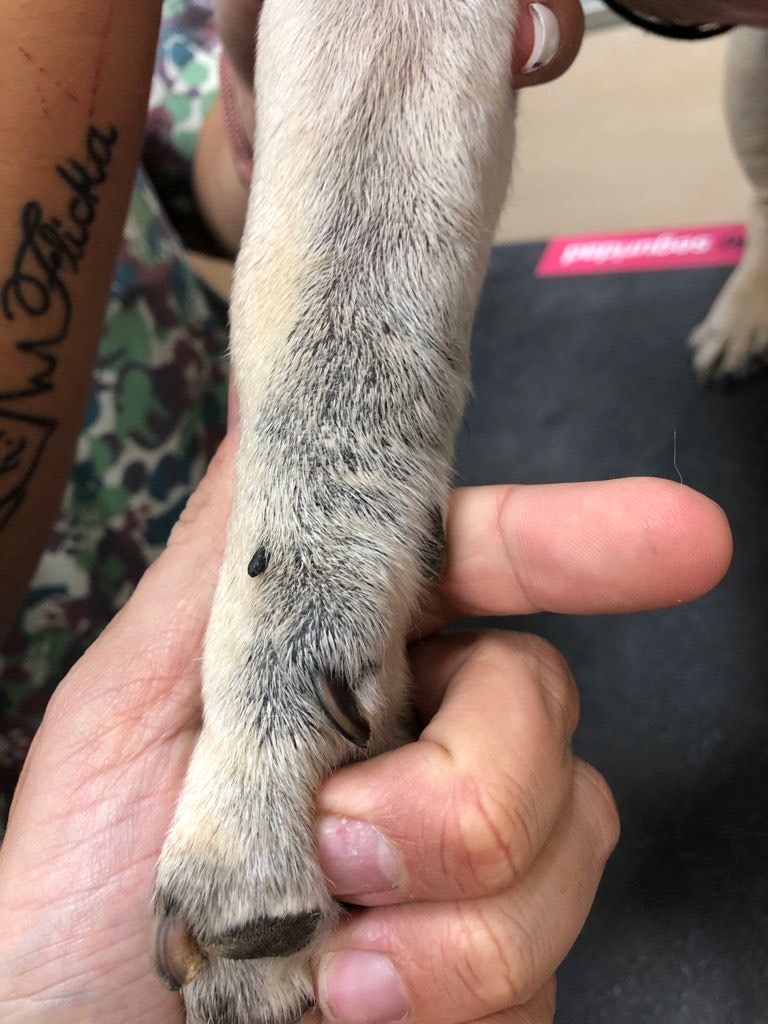
Later
After 14 days of treatment
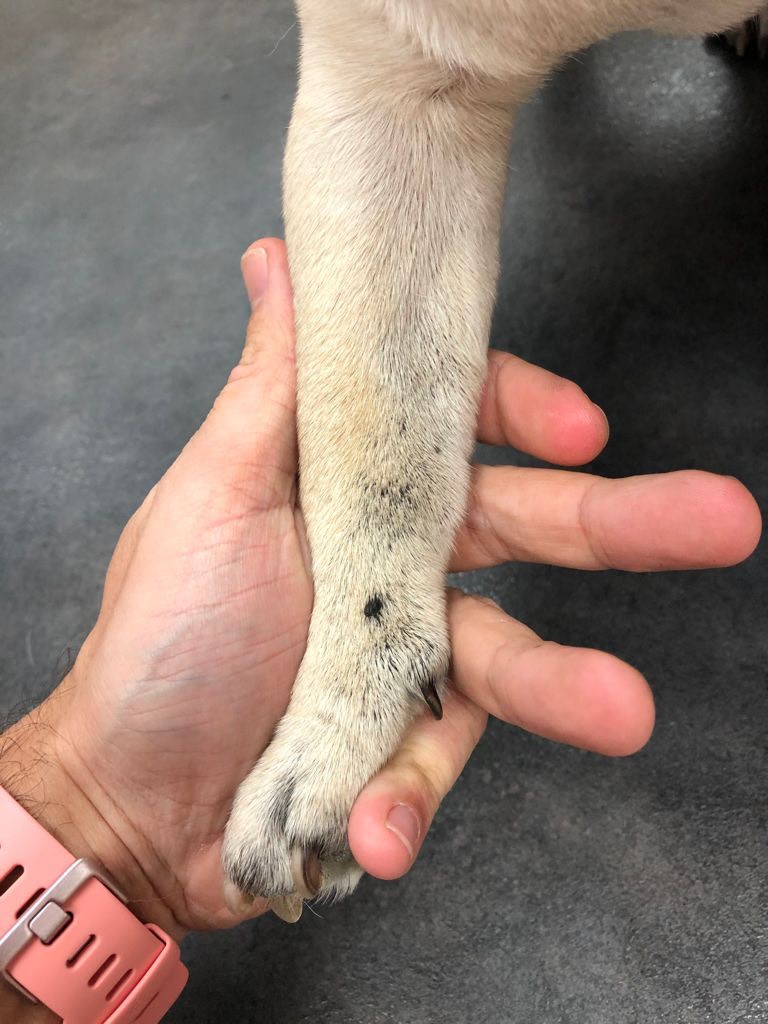
ANY doubts?
Frequent questions
HMBG is a TRPV1 channel antagonist, a non-selective neuronal channel. This channel transmits the itch sensation to the brain through different intracellular signalling cascades. When the signal reaches the brain, the scratching reflex is produced. HMBG blocks the TRPV1 channel, inhibiting the transmission of the itch sensation to the brain.
Yes, it can be used in combination with pharmacological therapies, with diets and food supplements.
Yes, the initial dosing is twice per day. According to the itching and lesion evolution and under the supervision of the vet it can be reduced for examples to once per day. It can be further reduced for example to twice per week as maitenance.
No, the product cannot be applied on eyes or mucosa.
No, even if the product is oil-based it is absorbed rapidly and does not leve residue even in white coat dogs.
Yes it is an ideal product to apply in young animals.
The compound has an excellent safety profile, obtained through in vitro toxicological and metabolism assays.
No, there is no risk since the product is rapidly metabolized in contact with biological fluids.
No, the product does not cause any unpleasentness or reaction when applied.
